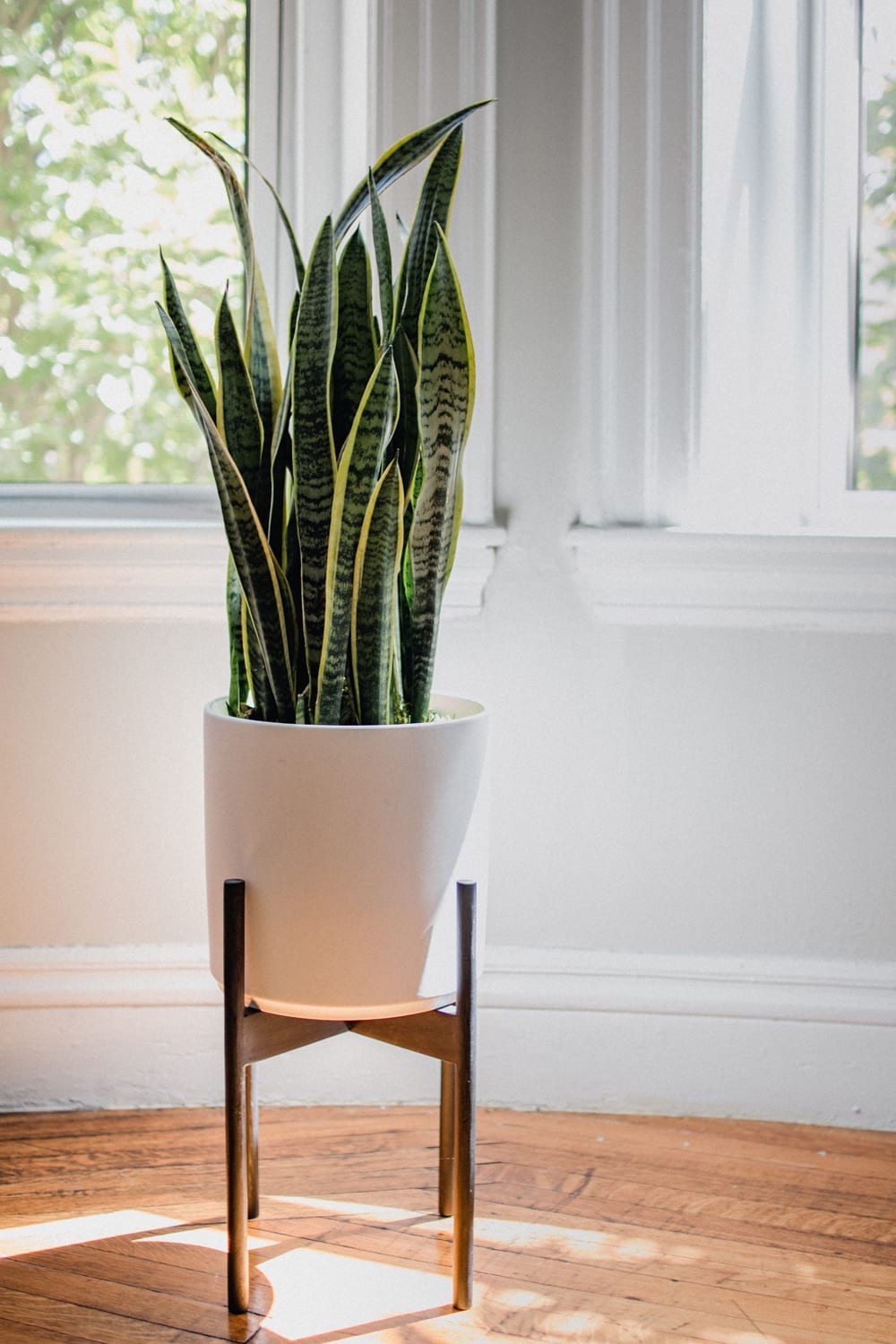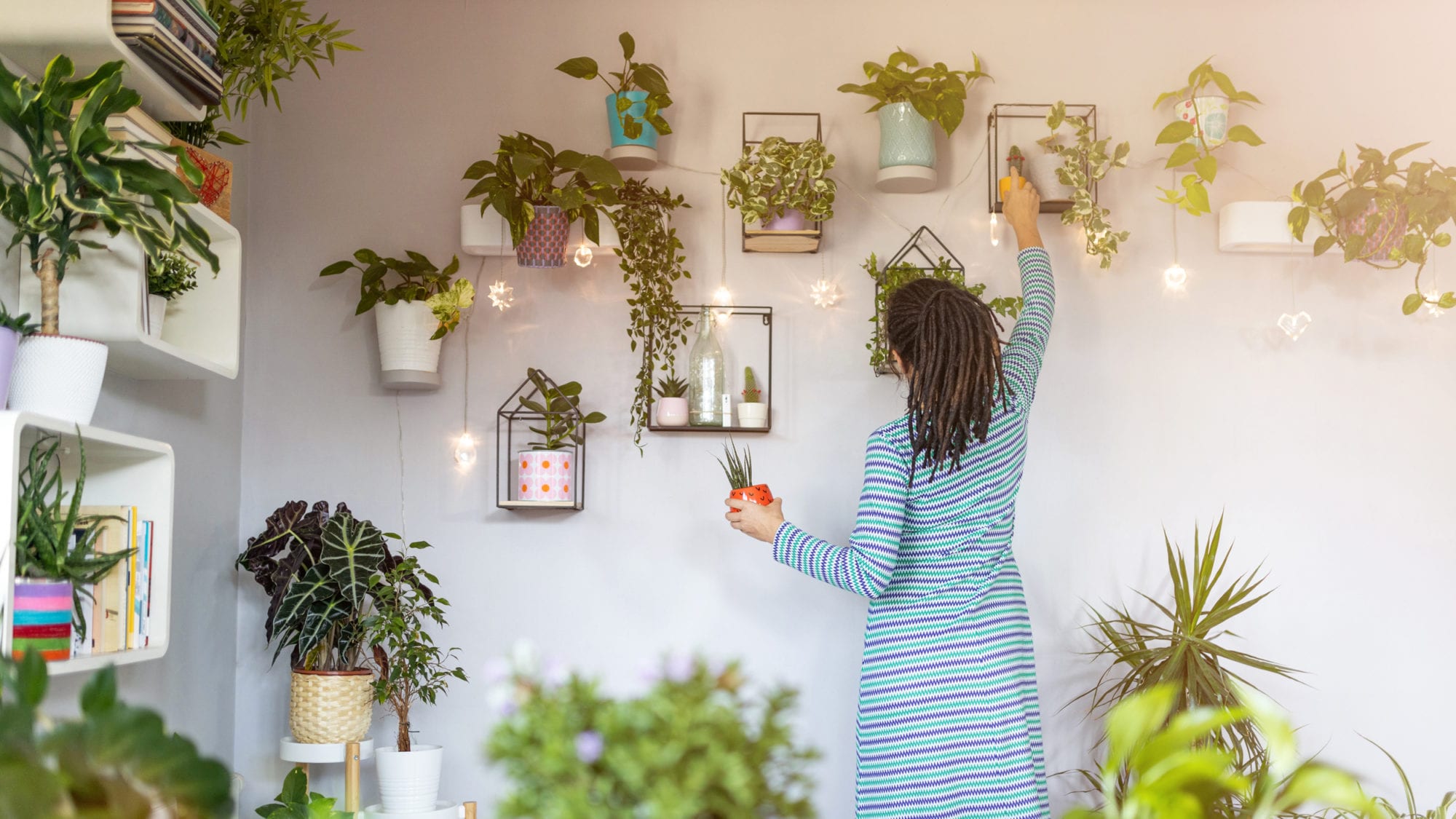There are many benefits to owning houseplants. They add instant colour and vibrancy to any room, and caring for them gives you chance to connect with nature, right in your home. Helping plants to thrive indoors is easier than you think. Just follow these tips from Trudy Watt, a horticulturist with Red Deer’s Parkland Nurseries and Garden Centre, to realize the power of houseplants.
PICK THE RIGHT PLANT FOR YOUR PLACE
Location and sunlight are among the most important factors when choosing a new indoor plant. Consider the amount of light your preferred plant requires: Does it need bright, direct sunlight, indirect or diffuse light, or lower light conditions—and do the plant’s needs match the location you have in mind? If it doesn’t, your plant will let you know. Plants may look faded, drop leaves or fail to grow if they’re receiving insufficient light, while too much light can cause some plants to appear scorched and limp.
START SIMPLE
Some houseplants are challenging to grow and require skill and time to properly cultivate, which can be overwhelming when you’re just starting out. If you’re new to nurturing houseplants, try starting with a species from the Sansevieria genus, also known as snake plants. “It’s a big group of plants that are drought tolerant and tolerant of low light, and really easy to grow,” Watt says. Plus, their distinctive, pointy leaves lend colour and texture to any space.

plant (photo: Kelly Sikkema/
Unsplash)
ENSURE A SMOOTH MOVE
If you’re buying a houseplant from a garden centre, Watt says the first step is to ask for help choosing one that’s healthy to begin with. (This is also a good time to ask for any additional plant-care tips.) When the weather is cold, the garden centre should wrap the plant for you so it’s protected from the elements. Then, once you’ve brought it home and unwrapped it, just let it be. “Before you transplant it or start to fuss with it too much, just leave it in its new spot for a couple of weeks to acclimate,” Watt recommends.
AVOID OVERWATERING
Watering too much is a common mistake. “Most people tend to overwater; they kind of kill things with love,” Watt says. To know when it’s time to water, she suggests using your finger to test the plant’s soil. When the top centimetre of the soil is dry to the touch, it’s an indication the plant is ready to be thoroughly watered. If the soil feels damp, it’s not yet time. Every plant is different, so rather than watering all your plants on a set schedule, rely on this easy test to know when each plant is thirsty.
DON’T FORGET TO FEED THEM
Your houseplants’ soil loses nutrients over time, so fertilizing is necessary. Most houseplants should be fed once a month when in active growth mode, which varies by plant but is usually during spring and summer. Your garden centre will be able to advise you on the ideal fertilizer for your plants.
RE-POT WHEN NECESSARY
Healthy plants may need bigger pots. A few common indicators include roots coming out of the drainage hole at the bottom of the pot, or if a plant needs watering more often because it’s not holding the water. Re-potting simply requires a slightly bigger pot and good quality potting soil. Place fresh potting soil in the new pot, gently remove the plant from its current container, then loosen its roots and place it in the new pot. Position it properly and add a little more soil, and you’ve just successfully re-potted a plant.
PROTECT YOUR PETS
Some houseplants are toxic to cats and dogs, including peace lilies, various common species of Dracaena (such as the corn plant) and even certain herbs (like tarragon). If you’re a pet owner, consult the American Society for the Prevention of Cruelty to Animals (ASPCA)’s detailed list of poisonous plants before bringing a new plant home.
HOW TO SAVE
AMA members save 10% on select regular-price products at Parkland Nurseries and Garden Centre in Red Deer.
